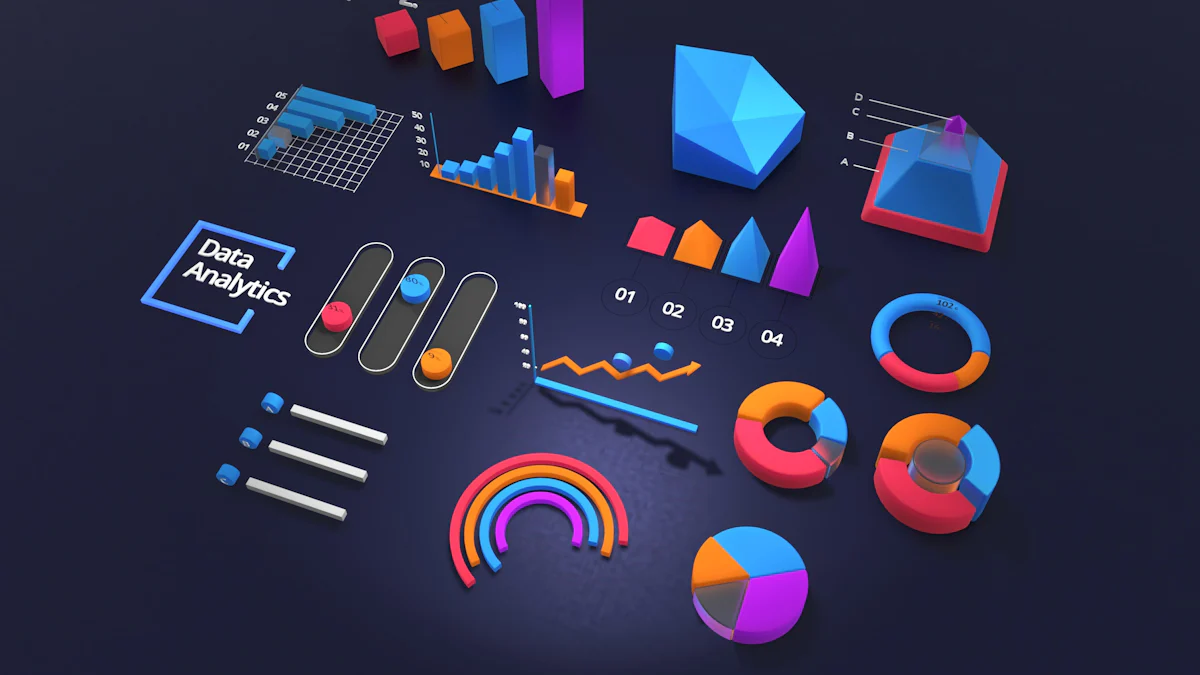Change Data Capture (CDC) is a pivotal concept in modern data architectures, revolutionizing the way organizations handle data updates. By focusing solely on changed data, CDC optimizes performance and resource allocation, making processes more efficient. Kafka, a leading pub/sub message broker, plays a crucial role in CDC by seamlessly capturing and streaming data between databases. Its scalability, fault tolerance, and low latency make it an ideal choice for real-time data processing within the modern data stack. Embracing CDC with Kafka empowers businesses to stay agile and make informed decisions promptly.
Understanding Change Data Capture (CDC)

What is CDC?
Definition and basic concepts
Change Data Capture (CDC) involves identifying and tracking alterations made to data in real-time, ensuring that only the modified data is processed further. This method captures changes occurring in databases without affecting the operational systems directly.
Background and Evolution
The concept of Change Data Capture (CDC) originated from the need to track data changes in real time. Initially, CDC methods relied on batch processing, which resulted in higher latency. As technology advanced, CDC evolved into modern methods that support real-time streaming. These modern approaches leverage event-driven architectures, significantly enhancing the efficiency and accuracy of data integration, providing businesses with more powerful insights.
Importance of CDC in Data Management
Real-time data integration
CDC plays a crucial role in integrating real-time data updates seamlessly into existing systems, enabling businesses to make informed decisions promptly based on the most recent information available.
Data consistency and accuracy
By focusing solely on altered data, CDC ensures that the information processed remains consistent and accurate across all platforms. This approach minimizes errors caused by manual intervention or outdated datasets.
Traditional vs. Modern CDC Approaches
Batch processing vs. real-time streaming
Traditional methods rely on batch processing, which involves periodic updates at fixed intervals, leading to potential delays in data availability. In contrast, modern CDC tools offer real-time streaming capabilities, ensuring immediate access to updated information.
Limitations of traditional methods
Historically, traditional approaches faced challenges with latency issues and synchronization errors due to delayed data processing cycles. These limitations hindered organizations from accessing up-to-date insights for critical decision-making processes.
Advantages of modern CDC tools
Modern CDC tools have revolutionized the way organizations handle data updates by providing efficient real-time processing capabilities. These tools optimize performance and resource allocation while ensuring that only changed data is captured and processed swiftly.
Introduction to Kafka
Apache Kafka is an open-source event streaming platform designed to handle high-throughput data streams and scale horizontally to accommodate growing data volumes. It provides reliable and scalable performance by distributing data across multiple servers, ensuring fault tolerance and parallelism. Kafka's architecture consists of servers and clients that enable the durable writing and storage of streams of events for real-time or retrospective processing.
Kafka's Role in CDC
Stream processing with Kafka involves publishing records to different topics, each containing a partitioned log that tracks records in real-time. These partitions are distributed and replicated across servers, ensuring scalability, fault tolerance, and parallelism for efficient data processing. Kafka Connect enhances CDC by facilitating the integration of various connectors that capture changes from source systems or databases seamlessly.
Benefits of Using Kafka for CDC
-
Scalability: Kafka can handle millions of events per second, making it ideal for streaming real-time data in CDC processes.
-
Performance: The high throughput capabilities of Kafka ensure efficient data processing and delivery within modern data architectures.
-
Fault Tolerance: By replicating data across multiple brokers, Kafka guarantees data availability even during failures.
-
Reliability: The distributed commit log design of Kafka enables low-latency ingestion and processing, ensuring reliable CDC operations.
Modern Data Stack Tools for CDC
Overview of Modern Data Stack
Definition and components
Modern data stack tools encompass a comprehensive set of technologies designed to streamline data processing, from ingestion to analysis. These tools typically consist of data integration platforms, transformation engines, and storage solutions that work cohesively to manage and analyze vast amounts of data efficiently.
Key players in the market
In the realm of modern data stack tools, several key players have emerged as industry leaders, offering robust solutions for organizations seeking to enhance their data management capabilities. These players include TapData. Fivetran, Stitch, dbt, Snowflake, BigQuery, among others.
TapData is an open source, real-time data platform designed to solve the age-old data integration problem with a novel approach:
-
Uses CDC-based, real-time data pipelines instead of batch-based ETL
-
Supports a centralized data hub architecture, in addition to point-to-point
Key Features:
-
60+ Built-in CDC connectors
-
Point to point or hub architecture
-
No code with drag & drop experience
-
Javascript & Python UDF (user defined functions) in the pipeline
-
Centralized caching: Reduces the need for numerous data pipelines, optimizing performance and resource utilization
-
Heterogeneous database support, from SQL to NoSQL or vice versus
-
Multi-table join / Building materialized views (beta)
-
Community-driven: open-source and built with the community for the community, ensuring a solution that meets real-world needs
>>> Embark on a journey to streamline your MongoDB ETL processes by trying TapData today.
To know more about TapData in action, schedule a free demo Here.
Integrating CDC with Modern Data Stack Tools
Data ingestion tools (e.g., Fivetran, TapData)
Data ingestion tools like Fivetran and TapData play a pivotal role in capturing real-time changes from various sources and seamlessly integrating them into the data pipeline. By automating the extraction and loading processes, these tools ensure that fresh data is readily available for analysis.
Data transformation tools (e.g., dbt)
Data transformation tools such as dbt enable organizations to model and transform raw data into actionable insights. By providing a structured framework for data modeling and analytics, dbt streamlines the process of preparing data for downstream analysis within the modern data stack.
Data warehousing solutions (e.g., Snowflake, BigQuery)
Modern data stack tools leverage advanced data warehousing solutions like Snowflake and BigQuery to store and query large datasets efficiently. These cloud-based platforms offer scalable storage options and powerful querying capabilities that facilitate real-time analytics and reporting.
Case Studies and Practical Examples
Real-world implementations
Improved Business Outcomes: Organizations utilizing modern data stack tools integrated with CDC have reported significant improvements in business outcomes. By leveraging real-time insights derived from fresh data streams, companies can make more informed decisions leading to enhanced operational efficiency.
Migration to the Cloud: The adoption of CDC within modern data stacks has facilitated seamless migration to cloud environments for many organizations. By ensuring continuous replication of changed data without disrupting operations, CDC simplifies the transition process while maintaining data integrity.
Lessons learned and best practices
-
Continuous Monitoring: Regular monitoring of CDC processes is essential to ensure the accuracy and consistency of replicated data across systems.
-
Automated Error Handling: Implementing automated error handling mechanisms can help mitigate issues during the replication process.
-
Scalability Planning: Organizations should anticipate future growth requirements when selecting modern data stack tools to accommodate scalability needs effectively.
-
Cross-team Collaboration: Encouraging collaboration between IT teams responsible for CDC implementation can streamline processes and optimize tool utilization for maximum efficiency.
Best Practices for Implementing CDC with Kafka and Modern Data Stack Tools
Planning and Strategy
Assessing data needs and goals
To ensure successful implementation of Change Data Capture (CDC) with Kafka and modern data stack tools, organizations must first assess their specific data requirements and objectives. This initial step involves identifying the types of data that need to be captured in real-time and defining the ultimate goals of integrating CDC into existing data architectures.
Choosing the right tools and technologies
Selecting the appropriate tools and technologies is paramount in establishing an efficient CDC framework. By evaluating the scalability, reliability, and compatibility of different solutions, businesses can make informed decisions on which tools align best with their CDC objectives. Kafka, renowned for its robustness in streaming data, stands out as a top choice for organizations looking to implement CDC seamlessly.
Implementation Steps
Setting up Kafka for CDC
The first practical step in implementing CDC with Kafka involves setting up the Kafka infrastructure to support real-time data streaming. Organizations should configure Kafka clusters, topics, partitions, and replication factors according to their specific data processing requirements. This foundational setup lays the groundwork for capturing and processing changed data efficiently within the Kafka ecosystem.
Configuring connectors and data pipelines
Once Kafka is established for CDC, configuring connectors becomes essential to facilitate seamless data flow between source systems and target databases. Organizations can leverage Kafka Connect to integrate various connectors that capture changes from source systems in real-time. Establishing robust data pipelines ensures that modified data is propagated accurately across different platforms within the modern data stack.
Monitoring and Maintenance
Ensuring data quality and consistency
Continuous monitoring of CDC processes is critical to maintaining high standards of data quality and consistency throughout the integration pipeline. By regularly validating replicated data against source databases, organizations can identify discrepancies promptly and take corrective actions to ensure accurate information dissemination across all systems.
Handling errors and troubleshooting
Inevitably, errors may arise during the CDC implementation process; thus, having robust error handling mechanisms in place is vital. Organizations should proactively monitor error logs, identify root causes of issues promptly, and implement effective troubleshooting strategies to minimize downtime or disruptions in the CDC workflow. By addressing errors swiftly, businesses can uphold smooth operations within their modern data stack environment.
Recap of the Significance of CDC: Change Data Capture (CDC) stands as a cornerstone in modern data architectures, optimizing data processing by focusing solely on altered information. This approach ensures efficiency and accuracy in real-time updates.
Summary of Key Points: From understanding the essence of CDC to exploring Kafka's pivotal role, the blog delved into the transformative impact of modern data stack tools on streamlining data processes. These tools, including advanced data ingestion, transformation, and warehousing solutions, significantly enhance real-time data integration and management, offering businesses unprecedented agility and insight.
Future Outlook for Change Data Capture: With Kafka emerging as a central player in real-time stream processing, the future holds promising advancements in leveraging CDC and modern data stack tools for agile decision-making and seamless data integration. These tools will continue to enhance efficiency, providing businesses with deeper insights and greater flexibility in managing their data.


